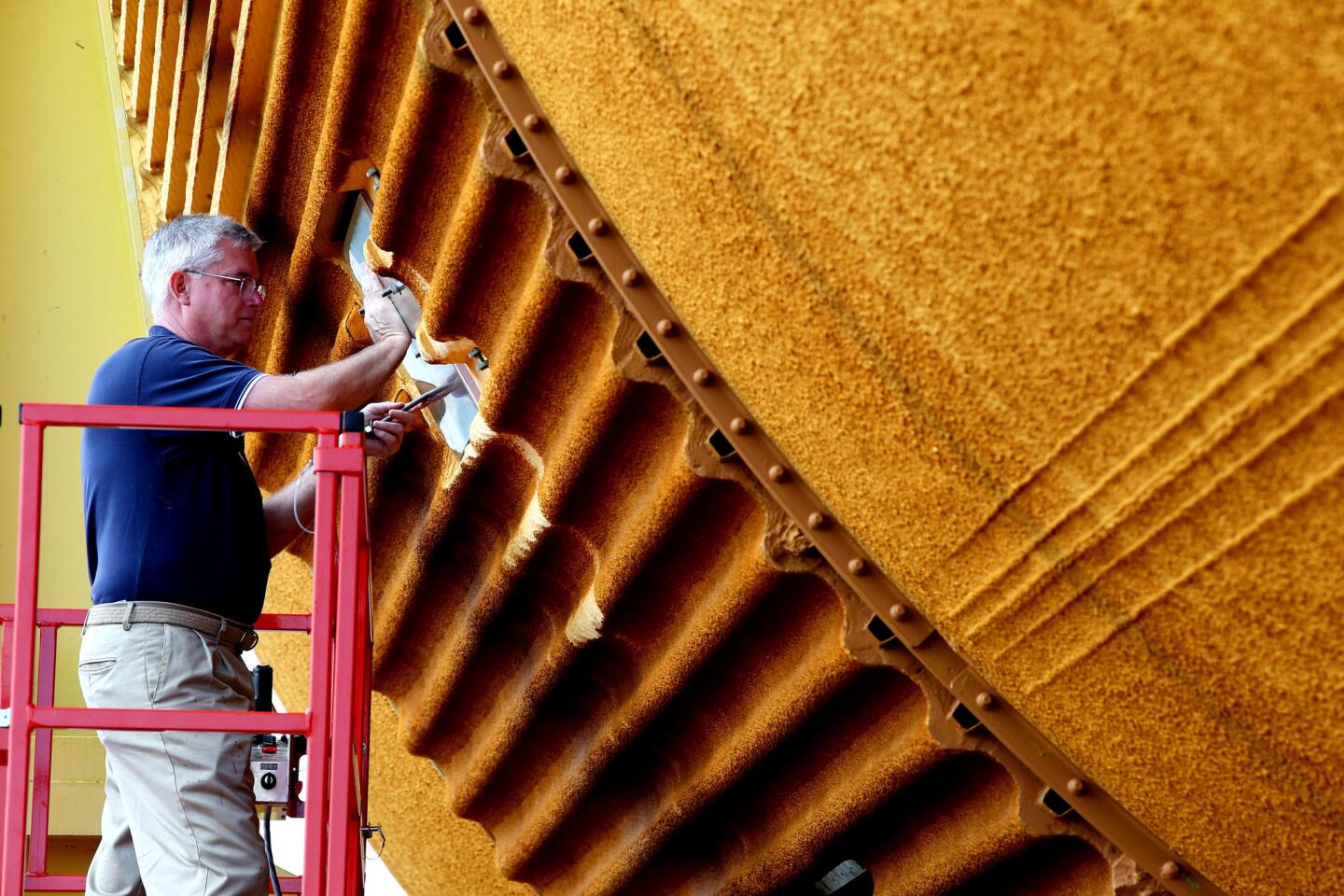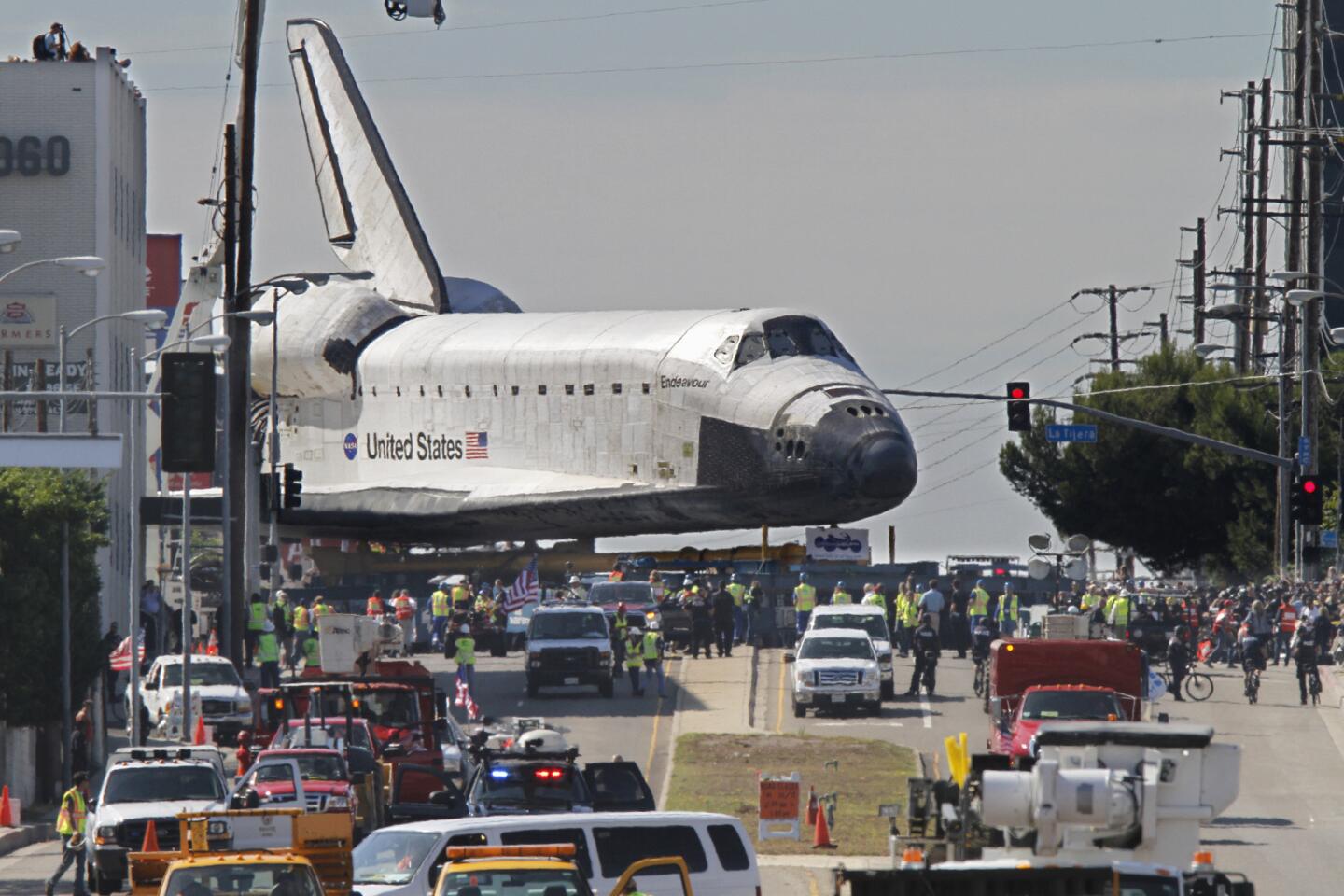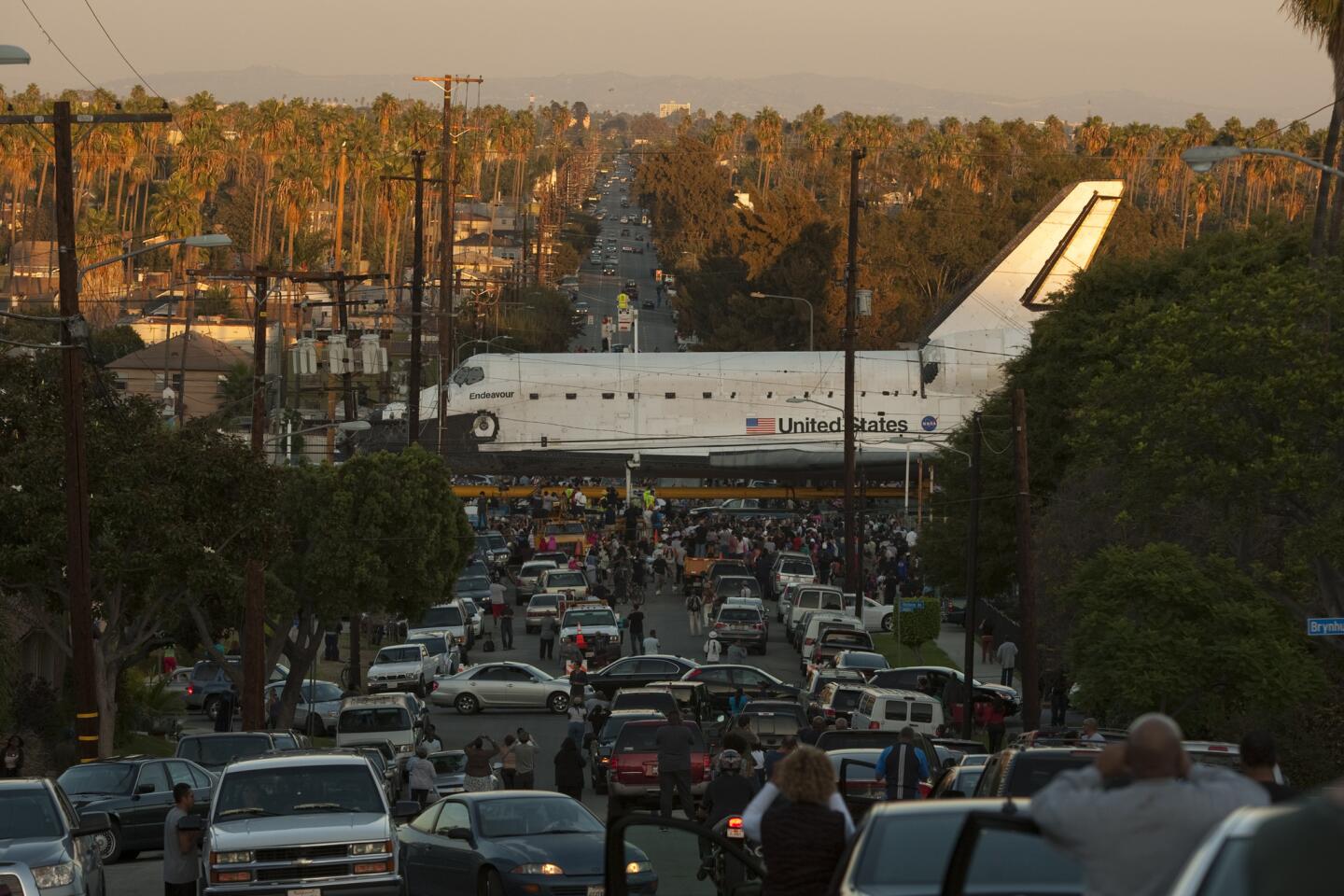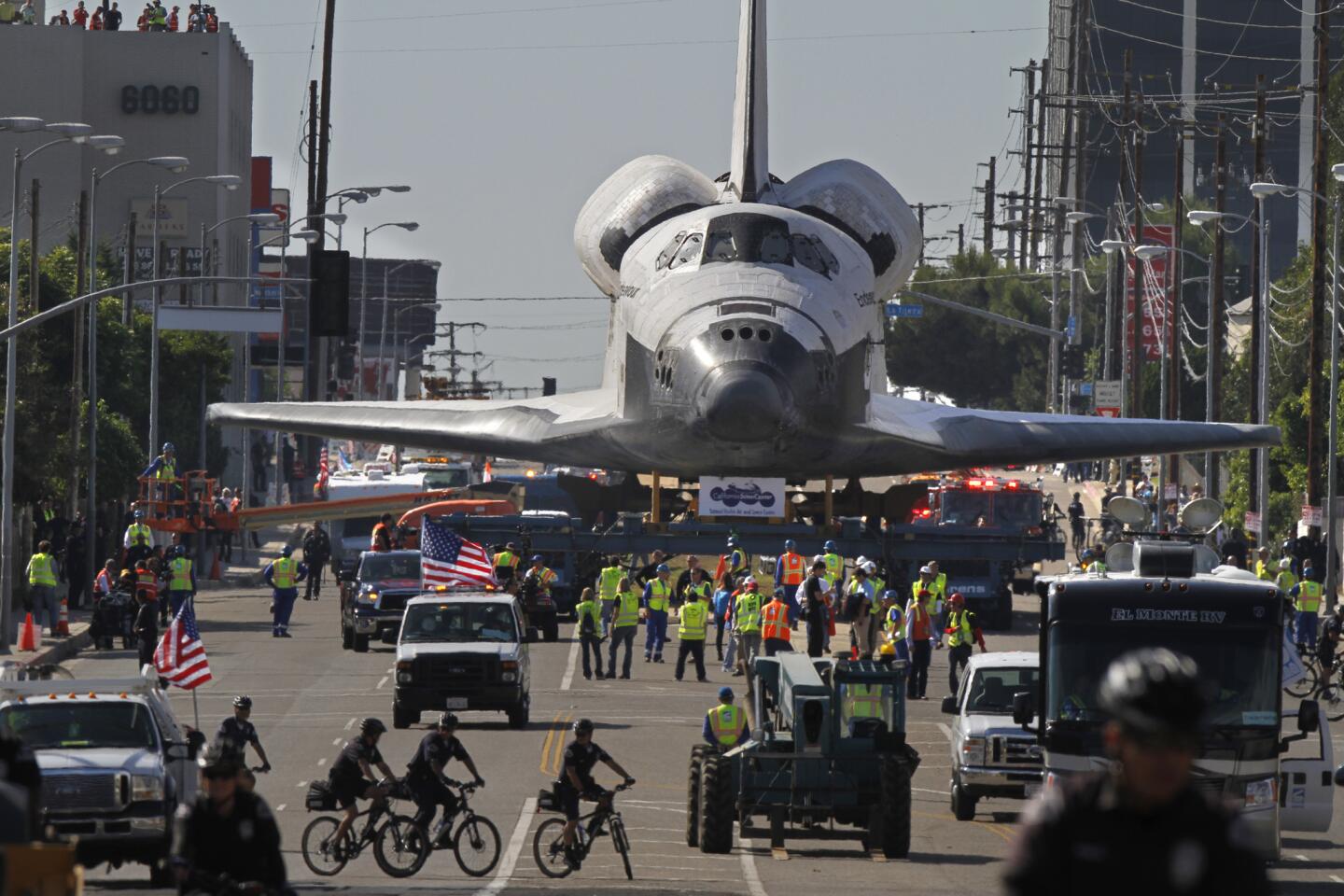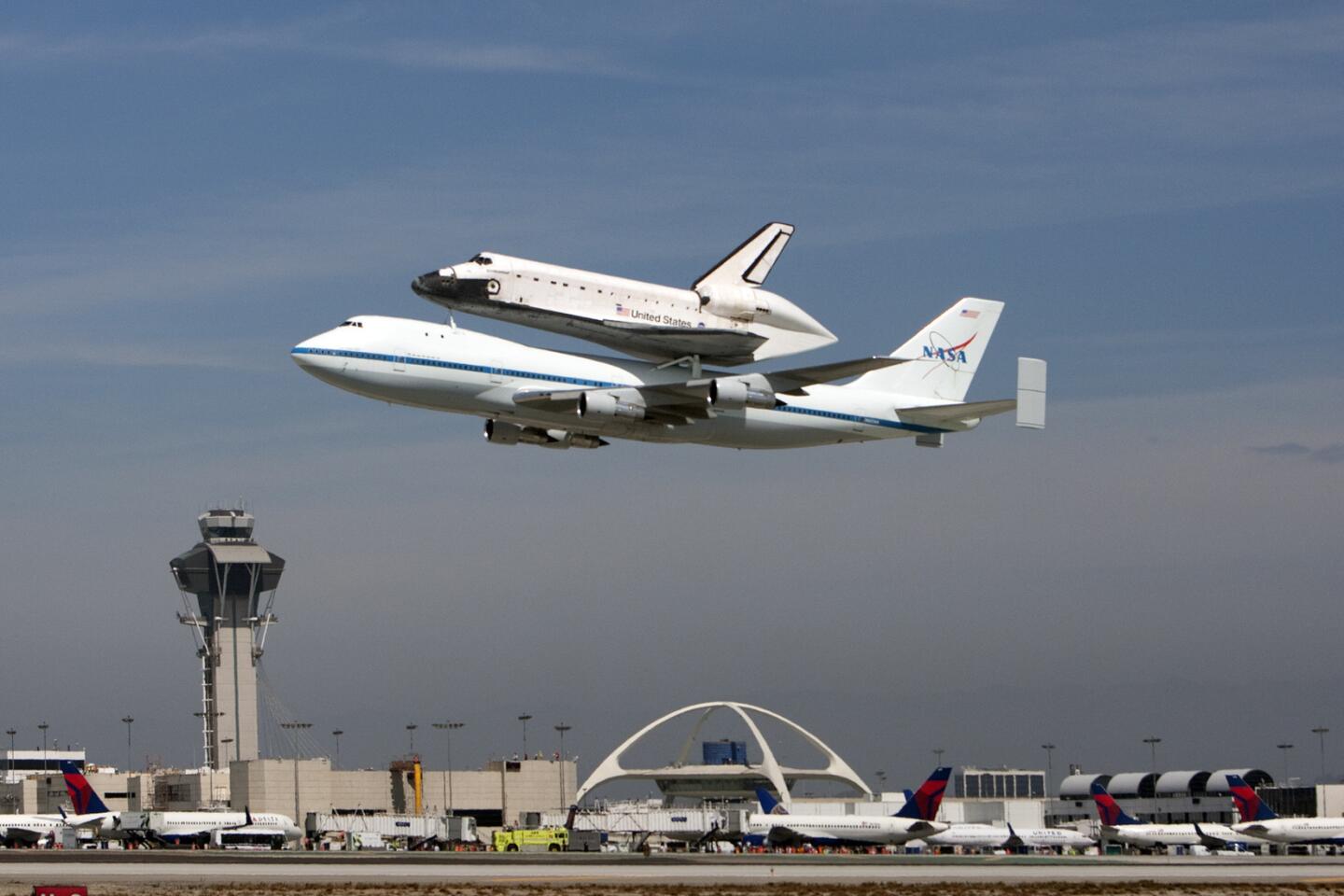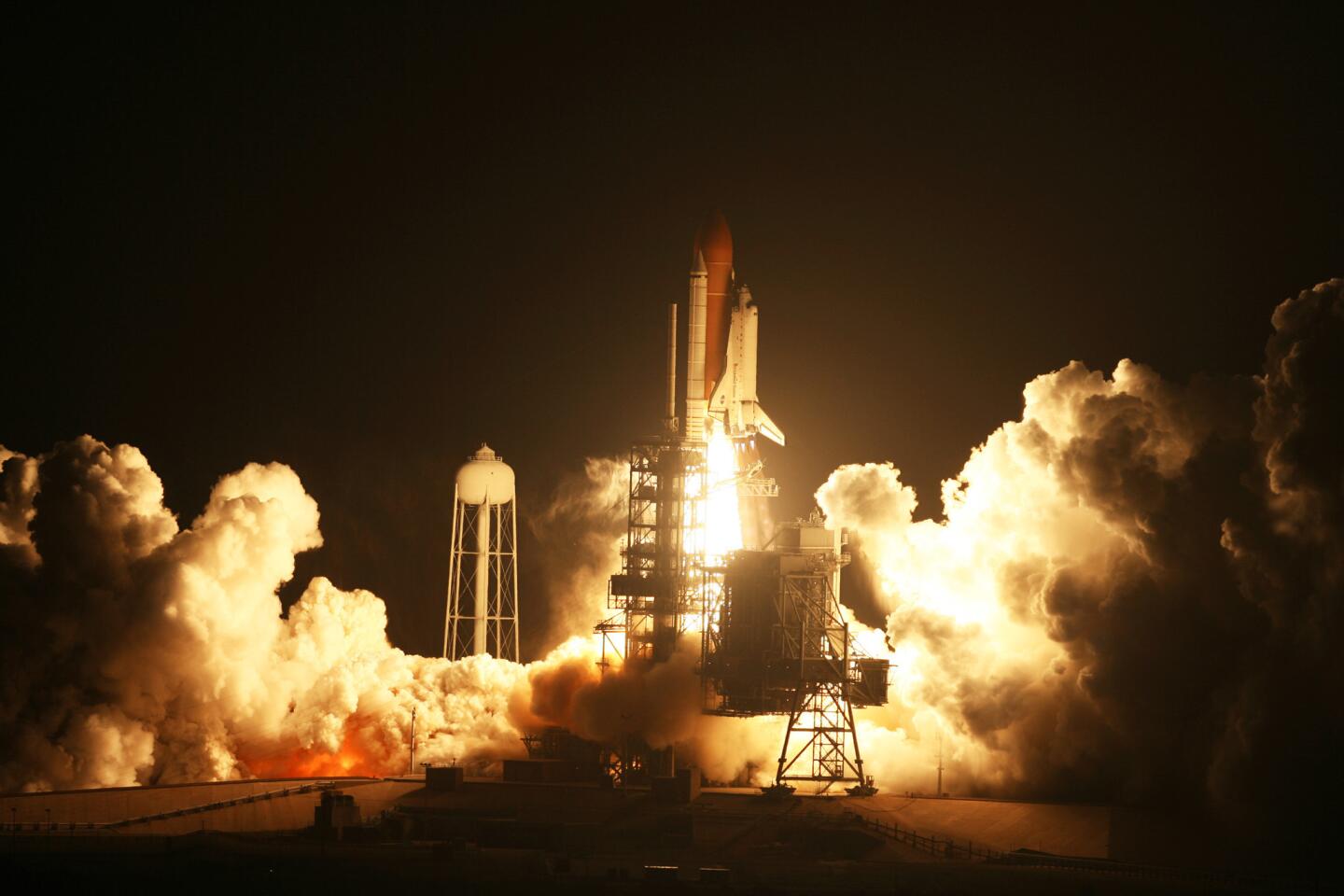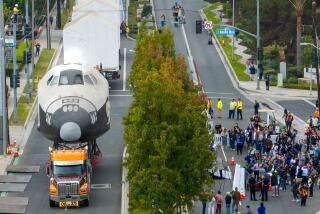The 66,000-pound fuel tank of a space shuttle, the last of its kind, is on its way to L.A.
When the space shuttle Endeavour crawled through the streets of Los Angeles to the California Science Center in 2012, it was missing something: the giant external fuel tank on which it rode piggyback into space.
There was a good reason. The external tanks, which attached to shuttles’ bellies, detached and burned up in the atmosphere shortly after liftoff. Museum officials figured they’d have to settle for a fake in their exhibit. Then, last year, NASA agreed to donate the last one in existence.
But the tank was in New Orleans and was about as tall as a 15-story building. Getting it to L.A. wouldn’t be easy.
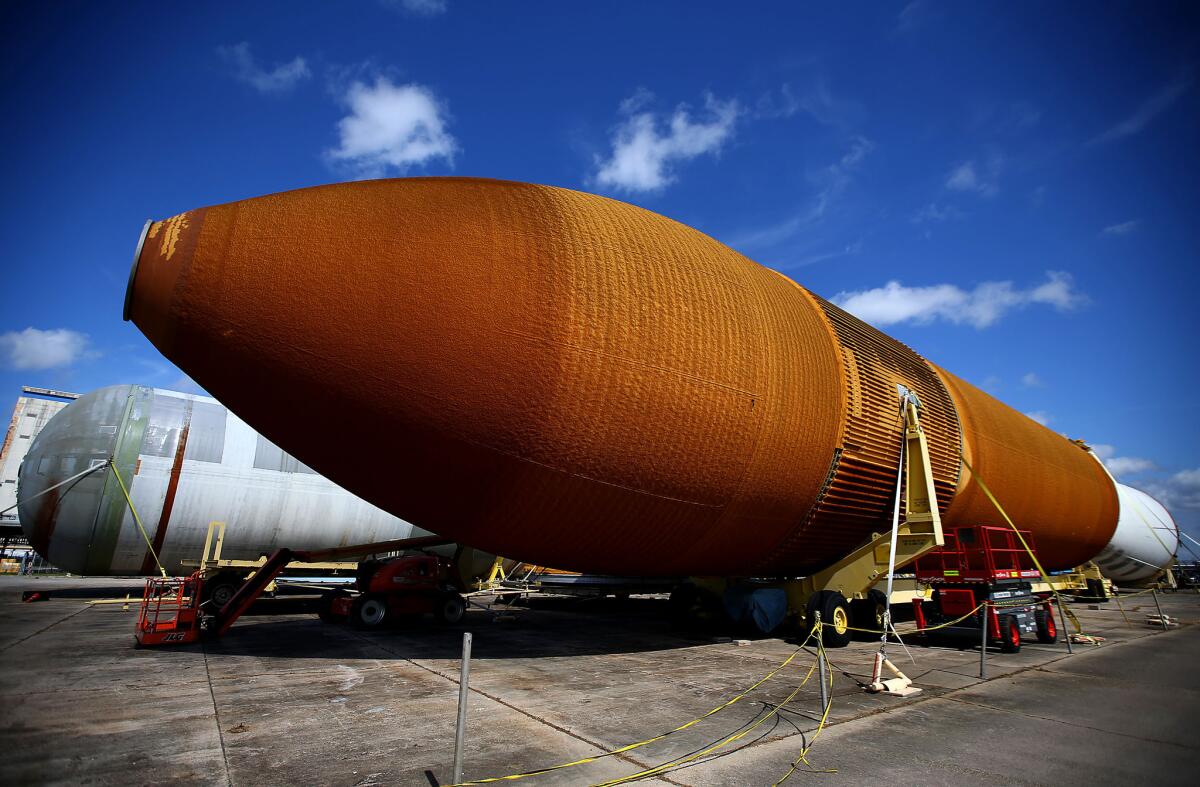
The external fuel tank is called ET-94.
Next month, though, the tank — an orange behemoth dubbed ET-94 — will begin its journey to the Science Center in Exposition Park, where it will be permanently displayed with Endeavour.
Museum officials on Thursday will formally announce the details of ET-94’s trip from NASA’s Michoud Assembly Facility in New Orleans — a complex logistical mission involving dozens of scientists, engineers, utility workers and police officers. In the coming weeks, it will travel by sea, cross the Panama Canal and traverse L.A. streets to its final destination.
“This move is a one-off,” said Mark Albrecht, director of operations for the company directing the move, Emmert International — which orchestrated the delivery of the 340-ton boulder “Levitated Mass” to the Los Angeles County Museum of Art in 2012. “We move heavy haul all the time. But this move is so big and tall, and the historic nature of it really sets it apart.”
The tank sits outdoors at the Michoud facility, where it was built. It is huge but also delicate, covered by about an inch-thick layer of foam. It can be touched only in a few places during transport.
Next month, ET-94 will be pulled on wheels by a specially built truck to a concrete pier in New Orleans. The truck will then move to the tank’s backside and, using a specially built front bumper, gently push the tank onto a barge, Albrecht said. On April 12, ET-94 will be launched into the Intracoastal Waterway, where it will be pushed by a river tugboat.
After reaching open sea in the Gulf of Mexico, the river tugboat will be replaced by a 96-foot ocean tugboat. About three-quarters of a mile of braided steel cable will separate boat and barge to absorb shock from the waves, Albrecht said.
The tugboat and barge will travel for seven to nine days, around the clock, at about 6 knots (about 7 mph), Albrecht said. At the Panama Canal, it will wait a day or two in queue before going through six locks — a water staircase that will lift the vessel 85 feet to the level of Gatún Lake in the middle of the canal and then back down to sea level on the Pacific side.
From there, the tugboat will travel for 17 to 20 days to San Diego, where it will clear customs before its expected arrival at Fisherman’s Village in Marina del Rey on May 18, according to the Science Center.
The tank — sitting atop dollies on a 42-wheel transportation device — will start its trek along city streets before dawn May 21. It will head to the 90 Freeway, on to Culver and Lincoln Boulevards, then to Westchester Parkway. It will go through Inglewood on Arbor Vitae Street to La Brea Avenue, drive past the Forum on Manchester Boulevard, then north on Vermont Avenue to the museum.
The 16.5-mile trek at about 5 mph is expected to take 16 to 18 hours.
At 66,000 pounds, ET-94 is less than half the weight of Endeavour, but it is longer. Unlike the shuttle, it has no wings, which will make it easier to maneuver on roadways, said Nathan Miranda, who is managing the move for the Science Center. Officials say no trees will have to be uprooted for the move, something that had to be done to accommodate Endeavour.

The space shuttle Endeavour made its final journey last weekend traveling 12-miles from Los Angeles International Airport, through Inglewood, to the California Science Center near downtown Los Angeles.
Every pole, phone line, traffic signal and turn of the route has been mapped in detail, said Miranda, who has driven the path so many times he’s lost count.
“I’m dreaming about the route now,” he said, flipping through a thick book of satellite images of the streets. “I can’t drive now without looking up and analyzing the wires.”
As the tank creeps by, there will be “rolling street closures,” he said. Traffic lights will be temporarily removed, utility wires raised or lowered.
For space shuttles, the external tank was, along with twin solid rocket boosters, one of three main sources of fuel. It was the only part of the shuttle stack that was not reusable. It detached about 70 miles above Earth’s surface and burned up in the atmosphere. Each launch required a new one.
I’m dreaming about the route now. I can’t drive now without looking up and analyzing the wires.
— Nathan Miranda, who is managing the move for the Science Center
The external tank held up to 1.6 million pounds of liquid hydrogen and liquid oxygen. The aluminum tank flexed and vibrated while being pushed by aerodynamic forces of thousands of miles per hour. The tanks were covered with spray-on foam to prevent ice from forming on the outside skin and to insulate the propellants inside. During launch, the foam skin could be several hundred degrees on the outside and several hundred degrees below zero on the inside.
ET-94, completed in 2001, was one of three types of external tanks used in the shuttle program. It was called a lightweight tank, intended to propel the shuttle into low-earth orbit. The later version, the super-lightweight tank, could carry more cargo to the International Space Station.
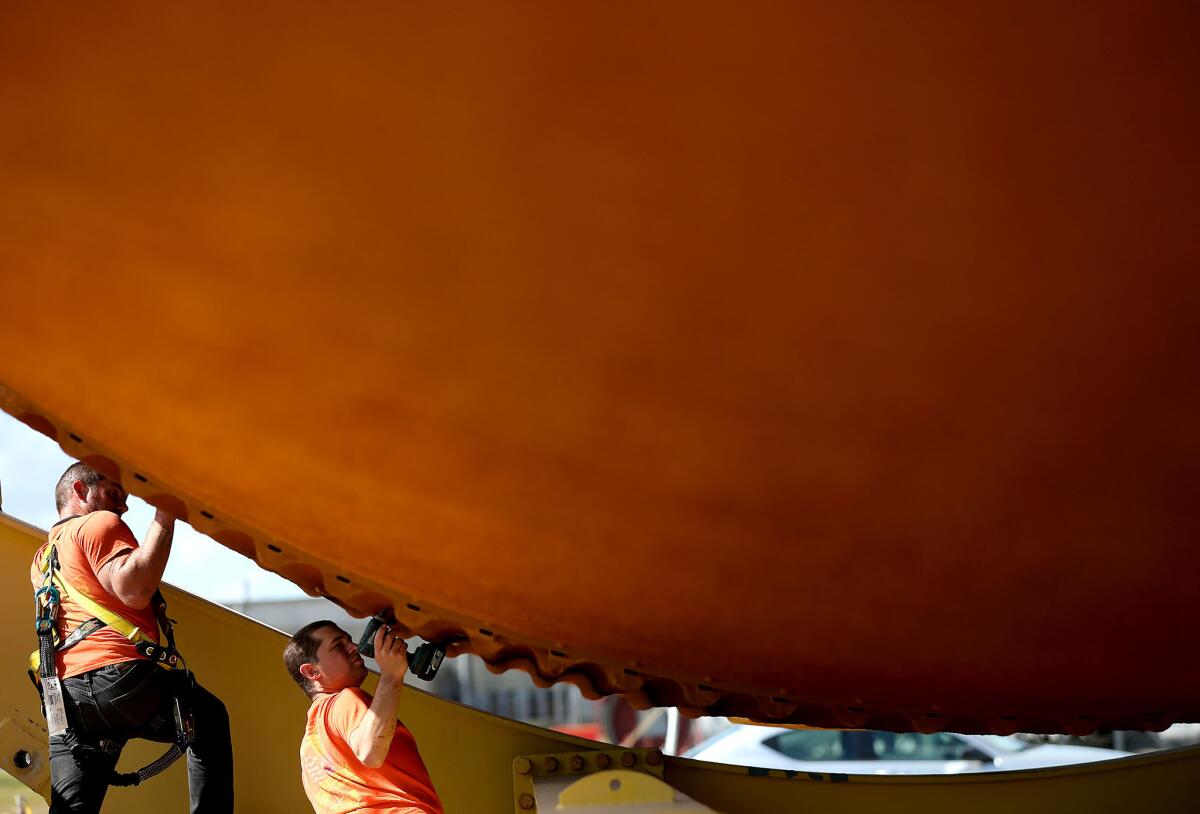
Jason King, left, and Justin Levin with LA ProPoint install a weather cover over the hydrogen vent valve on the external fuel tank.
After the shuttle Columbia burned up on reentry in 2003, killing the seven astronauts on board, NASA reprioritized its missions to complete the space station before retiring the shuttle fleet.
See more of our top stories on Facebook >>
Museum officials said ET-94, which never flew, is the “sister” to Columbia’s external tank, which doomed the mission when a piece of foam broke off during launch, causing catastrophic damage to the shuttle.
The Columbia Accident Investigation Board studied ET-94 in depth, dissecting foam from different parts of the tank to understand how it behaved, said Dennis R. Jenkins, the project director overseeing the museum’s Samuel Oschin Air and Space Center and a former contract engineer who worked on the shuttle program. Today, there are “significant pieces of foam” missing from ET-94 because of that investigation, he said. Museum officials say it will be repaired.
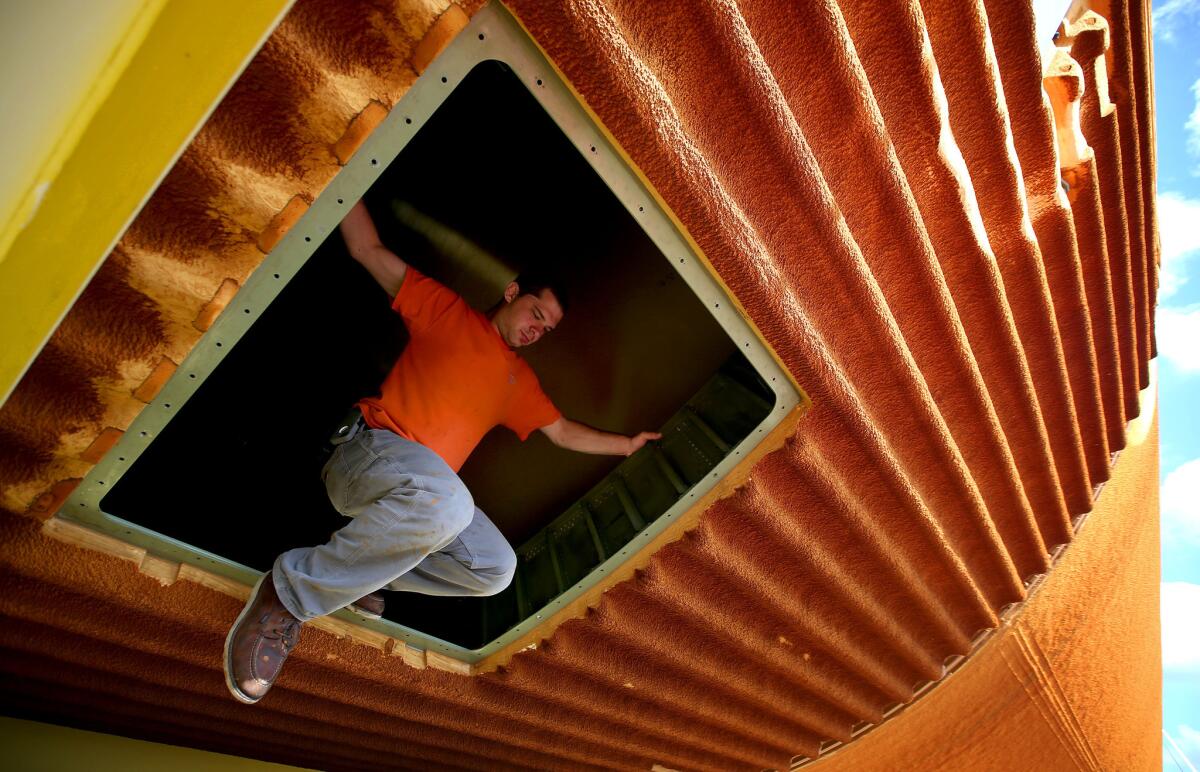
Justin Levin with LA ProPoint hops out of the ET-94 before installing a weather cover over the hydrogen vent valve to protect the tank on its trip to L.A.
Endeavour is also linked to tragedy. It was built to replace the Challenger, which exploded in 1986, killing all aboard.
“With stories like this in the exhibit, you can share the complexity of space travel,” said Science Center President Jeffrey Rudolph. “People realize the inherent dangers, that we do have accidents. We learn from them. We study what happened, we investigate and we move ahead and continue to explore and do our work.”
ET-94’s move is expected to cost $3 million, paid for through a fundraising campaign, Rudolph said. Endeavour, now displayed horizontally in a temporary hangar, and ET-94 will eventually be displayed in their permanent home, the Samuel Oschin Air and Space Center, expected to open in 2019. They will be set up vertically with the solid rocket boosters, as if the shuttle were ready to hurtle into space.
“It’s just fantastic to have a full stack of real flight hardware, and it’ll be the only one anywhere in the world, which makes it truly unique,” Rudolph said. “It makes it a worldwide attraction.”
In a statement, Mayor Eric Garcetti called the tank an “incredible piece of history” that will “inspire a new generation of Angelenos.”
Lynda Oschin, chairwoman of the Mr. and Mrs. Samuel Oschin Family Foundation, predicted that ET-94’s trip through Los Angeles would be the same sort of spectacle as when an estimated 1.5 million people lined the streets to welcome Endeavour.
“It’s a once-in-a-lifetime experience,” she said. “I think the streets are going to be lined up again.”
Twitter: @haileybranson
ALSO
UCLA community protests professor’s punishment for sex harassment
Refugees buying one-way tickets home after finding Germany intolerable
At $2 million a day, Porter Ranch residents get to keep their temporary housing
More to Read
Sign up for Essential California
The most important California stories and recommendations in your inbox every morning.
You may occasionally receive promotional content from the Los Angeles Times.




